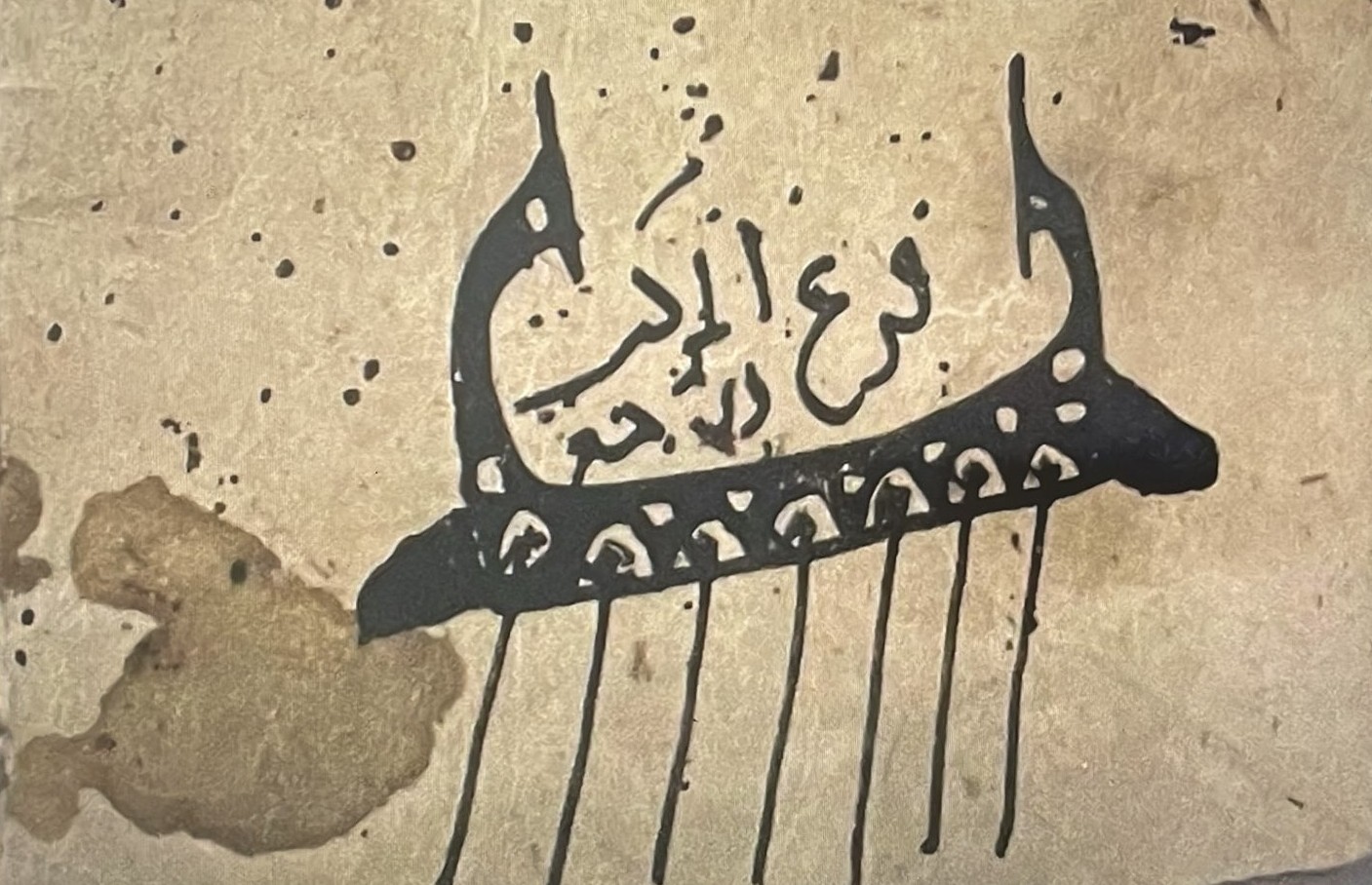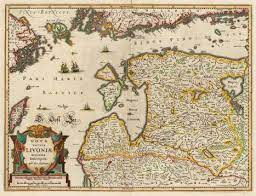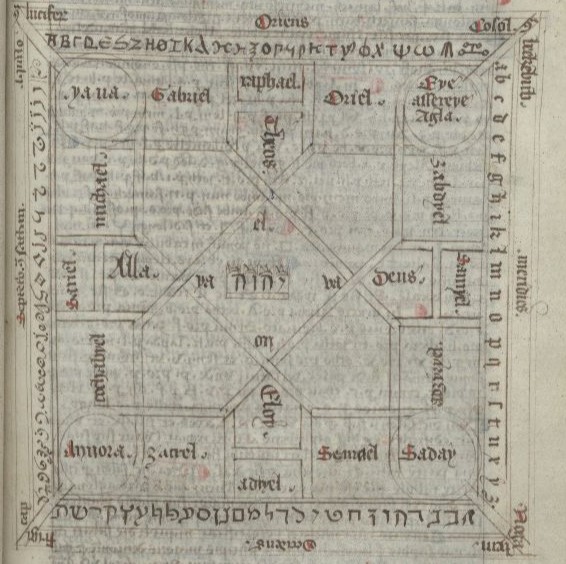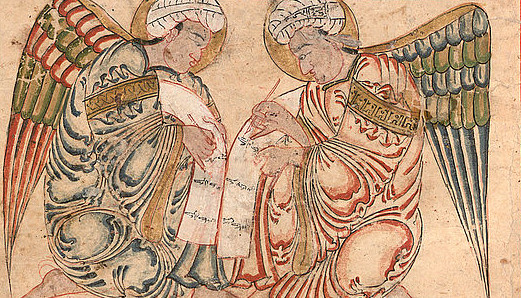Archives
-

Entangled Histories and Cultures: Jews, Christians, and Muslims in the Premodern Mediterranean through Literary and Folk Sources
Vol. 15 No. 3Guest Editors: Ahmed M. Sheir and Muhammad Imran Khan
The premodern Mediterranean, characterised by its diverse ethnic groups, religions, and societies, was a crucible for interreligious and sociocultural interactions. Recent advancements in historical studies and digital humanities have unlocked new avenues for exploring these relationships through literary and folk sources. This volume, arising from the ERC-funded project “Arabic Poetry in the Cairo Genizah” and a subsequent conference at Trinity College Dublin, seeks to explore the intertwined histories and cultures of Jews, Christians, and Muslims across the Mediterranean from the eleventh to the seventeenth centuries. It aims to illuminate the interconnectedness and mutual influences of these communities through their literary and folk exchanges, as well as their historical narratives.
Drawing on the concept of entangled histories and cultures, the volume examines how literary and poetic works serve as lenses to view the sociocultural dynamics of the time. These texts are not merely artistic expressions but vital historical sources that offer insights into education, religious values, and societal norms. Consequently, the contributions in this volume range from the exploration of Arabic epic literature’s appeal to Jewish readers, the portrayal of Europeans in Arab folk epics, and the role of poetry in reflecting historical events, cultural influences, and educational values, to the study of female religious conversions in early modern Spanish literature. Through these diverse perspectives, the volume presents a comprehensive picture of the premodern Mediterranean’s cultural and historical landscape, highlighting the enduring legacy of its entangled histories.
Note: The contributions are being published successively between December 2024 and summer 2025. Please return then for the full spectrum of contributions.
Image: Ship crossing the Mediterranean. Cambridge University Library, T-S NS 104.28 (lv)
-

Religious Conversion in a Religiously Plural World
Vol. 15 No. 2Guest Editors: Tova Makhani-Belkin, Minoo Mirshahvalad, Maria Papenfuss, Sebastian Rimestad
Religious conversion is a phenomenon that has intrigued scholars, theologians, and sociologists for centuries. As the conscious choice of a particular form of religion over another, it is eminently a form of religious contact. Religious conversion may be approached psychologically, sociologically, and conceptually. The contributions of this special issue show all three approaches and cover a wide array of geographical, social, and religious contexts.
-
Vol. 15 No. 1
This is our continuous issue of Entangled Religions and therefore still work-in-progress. Individual Articles, Reviews and other contributions will be added gradually. Be sure to check back regularly for any updates on this issue.
If you are interested in contributing to this issue or our journal in general, check out our Author Guidelines. We don't have specific deadlines, so authors are welcome to contact us anytime.
-

Religious Contact in the Early Modern Baltic Region
Vol. 14 No. 6Guest Editors: Sebastian Rimestad and Knut Martin Stünkel
The Baltic region has always been situated on the crossroads of the three main branches of Christianity: Orthodoxy, Catholicism and Protestantism. As such, it has provided ample material for studying religious contact. This special issue brings together four contributions analysing such cases in this region during the early modern period. It shows the value of the Baltic region as a multi-ethnic melting pot of different Christian denominations, held together primarily by the change-resistant land-owning class of Baltic Germans.
-

An/Iconism: On the Relations of Religion and Images
Vol. 14 No. 5Guest Editor: Thomas Jurczyk
In this special issue, we explore the role of depictions and images in religious traditions from both theoretical and empirical perspectives, covering a broad spectrum of religious traditions from Asia to Europe. Our focus is on examining the range of religious attitudes towards images, which can range from indifference (aniconism) to admiration (iconism) to outright rejection and destruction (anti-iconism). Our contributors discuss the hypothesis that religious attitudes towards images often fluctuate between these three categories, and that it is not possible to strictly classify a particular religious tradition as either hostile or friendly towards images. This introduction provides an overview of the central and complex concepts that form the basis of the individual contributions, including representation, icons, media and materiality, and an/iconism.
Image: John the Grammarian, Chludov Psalter (Moscow State Historical Museum MS. D.129), folio 67r, c. 850–875, 19.5 x 15 cm. (Wikimedia Commons: https://commons.wikimedia.org/wiki/File:Crucifixion_with_iconoclasts,_Chludov_Psalter,_folio_67r.jpg) -

Contemplation and Non-Doing: Solitude, Absorption and Letting-be as Structural Principles of Contemplative Religious Practice
Vol. 14 No. 4Guest Editor: Dylan Esler
This special issue of Entangled Religions explores the theme of non-doing in the context of contemplative praxis and examines this topic comparatively from the viewpoints of a number of religious traditions. The articles published in this special issue were initially presented as papers at a workshop organized in September 2021 as part of the “Dzogchen” research project. The project was sponsored by the German Federal Ministry of Education and Research from 2019 to 2022 and was based at the Center for Religious Studies (CERES) of the Ruhr-Universität Bochum (https://ceres.rub.de/en/research/projects/dzogchen/).
Note: The contributions are being published successively between July 2023 and summer 2025. Please return then for the full spectrum of contributions.
Image: Oliver Riché - "blue sky mind". Licence: CC BY-NC 2.0.
-

Western Learned Magic as an Entangled Tradition
Vol. 14 No. 3Guest Editor: Bernd-Christian Otto
These contributions represent the fruits of a workshop on Western learned magic as an entangled tradition that was held at the Center for Religious Studies (CERES) at the University of Bochum on September 14–15, 2019.
Image: Berengarius Ganellus: Summa Sacrae Magicae.” Public Domain. https://orka.bibliothek.uni-kassel.de/viewer/image/1343812736802/83/
-

Formative Exchanges in Western and Central Asia: Zoroastrianism, Manichaeism, Buddhism, and Islam in Contact
Vol. 14 No. 2Special Issue Editor: Kianoosh Rezania
This special issue is the second Entangled Religions publication on formative exchanges in religious contacts, based on the three workshops organized by Eduard Iricinschi and Kianoosh Rezania between 2017-2019 within the Käte Hamburger Kolleg “Dynamics in the History of Religions between Asia and Europe” at the Center for Religious Studies, Ruhr University Bochum. The first special issue, coming out of the 2017 workshop, focused on the formative exchanges between the major religions of the Sasanian and Roman empires, that is, Zoroastrianism, Manichaeism, and Christianity.
The present issue includes some of the contributions to the 2018 and 2019 workshops. They reflect two ways in which the scholars extended the scope of the first workshop. The 2018 workshop shifted its geographical focus to the eastern part of the Iranian plateau, the Indian subcontinent, Central Asia, and China, and it included Buddhism in the groups of religions in contact. The 2019 workshop addressed the Islamic period and considered formative religious contacts between Islam and other religions. Taken together, the two special issues thus cover religious interactions from the Roman Empire to China in the first millennium CE.
The contributions explore the formative dynamics of contacts, interactions, and exchanges that took place between these religions at multiple levels: knowledge, ritual, material, and experiential. In analyzing the ways in which religions were imported, adopted, and transformed in Western and Central Asia, they consider transformation, hybridization, and adaptation as different outcomes of religious encounters. They analyze key building blocks of religious encounters such as highlighting geography and landscape as key features in shaping religious encounters; negotiating expressions of materiality in religious settings; underlying shared associations between mythological vocabularies and social or ritual practices across religions; religious expressions of survival and adaptation techniques such as commercial exchange, medical care, cosmogonies and cosmologies, rituals, and politics.
Note: The contributions are being published successively between February 2023 and summer 2025. Please return then for the full spectrum of contributions.
Image: Miniature from ‘The Wonders of Creation,’ Wasit, Iraq, 1280.
-
Vol. 14 No. 1 (2023)
In this volume, the authors present fascinating findings about Marian devotion and the feminine sacred in Andean Christianity as well as dynamics of Pietism in Sweden during and after the Great Nordic War, and about indigenous Australian objects in a collection of religious artifacts at the University of Münster.
-

Whose Presence, Whose Absences? Decolonising Russian National Culture and History: Observations through the Prism of Religious Contact
Vol. 13 No. 8Guest Editors: Jesko Schmoller and Knut-Martin Stünkel
The still recent invasion of Ukraine by the Russian Armed Forces has generated a lively discussion about an imperial outlook prevalent in Russian society that for many years may not have been vocal and possibly therefore gone mostly unnoticed. The time has come, some scholars and activists argue, to critically question that outlook and attempt to decolonise Russia. This special issue is concerned with the formation of a new Russian national identity over the previous decades, where Slavic civilisation, Orthodox Christianity and imperial grandeur are combined in a narrative about the Russian nation. It directs attention to the absences produced by such a self-image: In a famously diverse and multi-ethnic country such as Russia, not everyone can identify with this image and some feel left out of the picture.
Although ethnic and religious belonging are closely entangled in Russia, the authors who contribute to this special issue focus mainly on the issue of religion as one aspect of identity on the national and regional level, for social groups and for individuals. In situations of religious contact, communities assimilate, converge or seek distance from one another and, when observed over a longer period of time, undergo metamorphosis. And where one religious denomination may be especially visible in the built environment, in the public space and in the media—the Russian Orthodox Church in the case of Russia—, this visibility can actually hide the presence of other denominations. In reaction to the question “whose presence, whose absences?”, the texts in this special issue critically engage with dominant representations of Russian culture and history, and several of them also shed a light on those inadequately represented communities with their own heritage, interpretations of history and perceptions.
Image credits: Photo by Jesko Schmoller (wall painting in the city centre of Ufa).
-

Interreligious Relations in Early Southeast Asia: Encountering Buddhists, Brahmins and Indigenous Religions
Vol. 13 No. 7Guest Editors: Jessie Pons and Patrick Krüger
Over the last two or three decades, scholarship on Southeast Asia has largely contributed to the reappraisal of the process of Indianisation of the region. Though not standardized and having changing meanings according to Indian and Western academic cultures, this paradigm can be broadly understood as the diffusion and adoption of Indian cultural values to Southeast Asia from the first few centuries following the turn of the Common Era onwards. Critical of this India-centric model, scholars have proposed alternative approaches to the study of interactions between South and Southeast Asia which have oscillated between that of externalist influence, that of the local or autonomous specificity or that which have focused on the circulatory dynamics of transfer of cultural, religious, diplomatic, and economic values through maritime trade routes across Asia.
Against the framework of these second-order reflections, this edited volume investigates different levels of relationship between Hindu, Buddhist, and non-Indic religions during ancient and early medieval times. It examines issues related to the multi-directional transfer of mythologies, belief-systems, practices, and material culture between the Indian sub-continent and what is commonly referred to as Southeast Asia. In this respect, it aims at shedding further light on the agencies in the spread of religious concepts and material objects, the dialectics between their received, assigned, or reinterpreted meaning, and the modifications brought about by their adoptions and/or adaptations.
This volume gathers articles that build upon papers presented at the workshop Interreligious Relations in Early Southeast Asia: Encountering Buddhists, Brahmins and Indigenous Religions which took place at CERES, on the 16th and 17th of January 2020.
Image: Iain Sinclair, 2013.
-

Invoking a Strange God: Rituals of Power and Religious Contacts in the Late Antique Mediterranean World and Medieval Europe
Vol. 13 No. 6Guest Editors: Alexandra Cuffel and Eduard Iricinschi
The papers included in this ER issue represent the outcome of a two-day workshop, held on November 7–8, 2019, at Käte Hamburger Kolleg of Ruhr University Bochum, on the topic of "Invoking a Strange God: Rituals of Power and Religious Contacts in the Late Antique Mediterranean World and Medieval Europe." The workshop brought together scholars in the fields of late-antique and medieval magic and Kabbalah in the Mediterranean world and Western Asia to study the role of religious contacts in their historical contexts. The conference on "Invoking a Strange God" pursued a three-fold programmatic approach. First, its participants considered the composite nature of primary sources of ancient, late-antique, and medieval “magic” and Kabbalah as texts documenting the accumulations of practices and ideologies underlying rituals of power. As a result, the first approach uncovered paths of circulation and patches of accumulation of these documents. Secondly, the scholars discussed historical instances of late-antique and medieval magic and Kabbalah as instances of mutual influence, exchanges, and appropriations among various historical religious traditions. As such, this second approach encouraged the participants to explore the malleable role of “tradition” and “change” in the discourses associated with practices of ritual power and invocations of divine names. Thirdly, the scholars undertook analyses of the materiality associated with rituals of power in various ancient and medieval Jewish and Christian traditions. In doing this, the third programmatic approach highlighted the role of materiality in the transmission of occult religious traditions, such as magic and Kabbalah.
Image credits: Hieronymus Bosch "The Conjurer," from Wikimedia Images
-

Safavid and Mughal Empires in Contact: Intellectual and Religious Exchanges between Iran and India in the Early Modern Era
Vol. 13 No. 5Guest Editors: Reza Pourjavady and Kianoosh Rezania
This special issue investigates the intellectual and religious contacts between Safavid Iran and Mughal India in the sixteenth and seventeenth centuries. Iran and North India witnessed fundamental cultural changes in the early modern period, which profoundly formed their new identity. The rulers of Iran at the time, the Safavids (1501–1722), proclaimed Shi’i Islam as the state religion; The Mughal emperors (1526–1858) fostered an environment in India where Islam, Hindu religions, Christianity and Zoroastrianism came more intensively in dialogue. Numerous syncretistic trends emerged from this entangled situation and the contacts affected the respective religions as well. Moderated Indian rulers invited, for example, the representatives of different religions to the court to dispute. They also supported translations of the Sanskrit religious texts into Persian. The open religious environment of Mughal India was for the Safavid intellectuals so attractive that many of them traveled or even migrated to India. Due to these migrations, scholastic teachings of Islamic theology started in major cities of India. Besides enhancing Mughal and Safavid intellectual thoughts, the interaction led to an emergence of religious thoughts in-between the two religious zones, as is the case of the new syncretistic philosophical and religious movement of Āẕar Kaivānīs. The volume covers several individual studies on topics related to the migration of Safavid scholars to the Mughal empire and its religious and intellectual outcomes.
Image: Hasan Jahangir welcoming Shah Abbas (Wikimedia)
-
Exploring Words: The Impact of the Colonialization Period on the Development of a Religious Language
Vol. 13 No. 4Guest Editors: Knut Martin Stünkel and Görge Hasselhoff
The volume examines the development of religious language in a special kind of contact situation i.e., the specific influence of colonial encounters on the formation and development of religious language in both Europe and the colonies. It attempts to scrutinize if knowledge of non-European languages challenged and changed religious concepts and notions in the European language. Did the European religious language(s) become more sense-related as a result of the colonial encounter? What (new) role did the transcendence-immanence distinction play? What concepts in general were found suitable by European authors as tertia comparationis or connectabilities to non-European languages?
-

Jewish Encounters in the Persianate World from the Sassanians to the Safavids
Vol. 13 No. 3Guest Editors: Zara Pogossian and Alexandra Cuffel
From the Sasanian Empire to the Safavids, the vast territories either directly controlled by or within the sphere of influence of various Iranian dynasties, were host to numerous religious groups. They interacted on multiple levels and social settings, on the one hand and set boundaries, on the other. Evidence from the analysis of magical practices, concerns for purity, prayers for rain, and other rituals point to instances of interaction. The creation of authoritative religious texts or debates about Scripture may be read both as an effort to set clear delineations between communities, but also for what they reveal about their cross-fertilization. This Special Issue includes a broad spectrum of studies that focus on the Jewish communities in Iranian lands widely speaking, including west and central Asia, from Late Antiquity to the eighteenth century in order to better understand patterns of encounter between various denominations of Jews (Rabbanite, Karaite, and Isawiyya), and Jews with Zoroastrianism, Manichaeans, and various types of Christians and Muslims. The role of religious affiliation and competition in inter-communal dynamics when inhabiting the same urban spaces, in trading partnerships, ritual practice, popular literature, learned theological discourses and scriptural exegeses, foundation legends and magic, among others, are some of the most salient foci of articles brought together in this volume. Of particular interest is the exchanges between Jewish communities, ideas, and religious movements and those of other religious affiliations.
Image: Manuscript from late 17th-early 18th centuries, Iran. Now kept in Los Angeles. Documentation ID# MS 1398, folio 15r. (Source: https://commons.wikimedia.org/w/index.php?curid=1083154)
-

Muslim Perspectives on Jewish-Christian Relations
Vol. 13 No. 2Guest Editors: Barbara Roggema and Alexandra Cuffel
How did Muslim thinkers perceive, imagine and depict Jewish-Christian interaction, whether it be in the past, in their contemporary world or in the eschatological future? Although there are numerous studies on Muslim views of Christianity, as well as on Muslim views of Judaism, there are no noteworthy ones, as yet, that deal with the question of whether and how Muslims authors (historians, exegetes, legal scholars, littérateurs) reflected on historical and imaginary relations between Jews and Christians. This collection seeks to fill this lacuna, at least in part.
Already in the Qur’an there are allusions to Jewish-Christian tensions and polemical exchanges, which is not surprising considering the vehemence of Jewish-Christian confrontation in the sixth- and early seventh-century Middle East. In Q 2:113 Jews and Christians are described as accusing each other of basing themselves on nothing. This verse warns that God will judge between them at the day of the resurrection. This passage serves to justify the Qur’an as a new Scripture that will settle ancient conflicts and ambiguities by re-establishing the untainted monotheism of Abraham. In other instances the Qur’an is more partial in the assessment of Jewish-Christian controversy, as emphasizing the human obligation to accept all Prophets. It takes a stand against the Jews for their rejection of Jesus, just as people are subsequently to be condemned for rejecting Muhammad’s prophethood. In this manner the Qur’an formed a starting point for the development of the Islamic ideas about the historical succession of prophets and the progress of revelation.
Throughout the centuries Jewish and Christian communities remained present in the Islamic heartlands and Muslim authors observed social interaction and competition between them and wrote about this with interest and, at times, humor. They were interested in the dhimmis’ historiography and investigated the discrepancies between their views of the Biblical past. The well-known Muʿtazilī thinker ʿAbd al-Jabbār al-Hamadhānī and the Ḥanbalī thinker Ibn Taymiyya, reflected on the question of how Christ’s religion related to that of the Jews, noting the tension between Christ’s perfection of Moses’ revelation and what they saw as the gradual Christian deviation from the monotheistic ideal. Muslim legalists’ ideas about Jewish-Christian religious and social interactions with one another were influenced by how their own religious intellectual heritage portrayed these communities and formulated Islam’s superiority vis-à-vis either religion separately. In early modern times, a new perspective emerges where Egyptian intellectuals viewed Jews and Christians as allies due to European Christian support for the budding Zionist movement.
The papers in this volume address a unique topic in the study of interreligious encounters: the observations and critiques of a third party on the social and intellectual exchange between two competing communities. This first attempt to analyze a wide variety of relevant genres, such as tafsīr, historiography, adab, polemics, pamphlets and Aḥkām Ahl al-Dhimma, shows that although many different approaches intersect in these works, they all bear witness to the desire among Islamic thinkers to harmonize Islamic norms, ideals and realities with regard to Judaism and Christianity and Islam’s relationship to both.
Image: The Miriam and Ira D. Wallach Division of Art, Prints and Photographs: Photography Collection, The New York Public Library. "Citadelle (vue du cimetière)." The New York Public Library Digital Collections. 1860 - 1929. https://digitalcollections.nypl.org/items/510d47d9-6170-a3d9-e040-e00a18064a99 -
Vol. 13 No. 1 (2022)
In this issue you will find two individual studies covering the subjects of urbanization and Chinese religion as well as dreaming and the African diaspora. One article contains an ethnography of Buddhists practice groups in Wuton village. It aims to discuss the relationship between two intertwined forms of soft power employed by the Chinese regime: The push for cultural consumption and the PRC’s re-definition of Buddhism as a culture instead of a religion. The other contribution explores diasporic experiences and reflections on religious conversion through analyzing, visitational, predictive, and inspirational dreams from Kabyle immigrant converts in France.
In our miscellaneous section you will be able to have a closer look at the experiences and learnings from the Käte Hamburger Kolleg (KHK) as a funding format. -

Religion and Pandemic: Shifts in Interpretations, Popular Lore, and Practices
Vol. 12 No. 3Guest Editors: Alexander Agadjanian and Konrad Siekierski
Religions worldwide have been strongly affected by the ongoing COVID-19 pandemic. The very fact of the pandemic, its emotional perception, as well as its medical, social, and political implications, required instant reactions from religious institutions and individual believers. These reactions related to changes in rituals, daily practices, and forms of communication; they caused the emergence of new myths, phobias, and protective strategies, and generated theological interpretations as well as new ethical choices.
In this special issue, the authors, using methods of various disciplines, address both intra-confessional and inter-religious dynamics with a special focus on interconnected, “entangled” responses to the crisis, in line with the focus of Entangled Religions.
(C) Photo by John Benitez on Unsplash.
-

The Desert Origins of God: Yahweh's Emergence and Early History in the Southern Levant and Northern Arabia
Vol. 12 No. 2Guest Editors: Juan Manuel Tebes and Christian Frevel
This special issue publishes most of the contributions of a three-day workshop of the Käte Hamburger Kolleg "Dynamics in the History of Religions between Asia and Europe" held on July 2019 at the Center for Religious Studies, Ruhr University Bochum. It seeks to explore and contextualize the configuration of the varied desert cultic practices from the southern Levant and northern Arabia during the Late Bronze/Iron Ages that may have contributed to the emergence of the Yahwistic cult. By this it raises also crucial questions on the early history of the Israelite and Judean religions in the first millennium BCE. Recent archaeological excavations in the Negev, southern Transjordan and Hejaz and new interpretations of old epigraphic and iconographic evidence are rapidly changing the biblical-based paradigm of the interactions between the desert cults and the Iron Age Levantine religions. Cultural contacts and the entanglement of religious networks are paramount for the understanding of this early history. Recent archaeological, iconographic and epigraphic studies of the Southern Levant contribute to the question of the emergence and early development of a Yahwistic religion. The issue adopts an interdisciplinary approach, assessing textual, archaeological, as well as epigraphic and iconographic data.
-
Vol. 12 No. 1 (2021)
In this issue we present you four individual articles investigating subjects like religious framing, antique local religion, japanese manga-art, and identity.
One article discusses the potential of religion to invert colonial centres and peripheries and focusses on European metropoles becoming places of exotic fascination while the familiar practices of co-religionists can turn the ‘hinterland’ into centres of learning.
Another article analyses the late antique religious life from the viewpoint of encounters—between the ideals of the ecclesiastical elite and the people’s local cultic practices.
With the example of the Japanese manga character Kamikaze Kaitō Jeanne, another contribution elaborates how concepts of angels are constructed in Japanese popcultural media. And also the subjects of entanglements of war, refugehood, and religion are delved in more deeply in an article about the Syian scene of war as a determinant backdrop to the Syrian refugee crisis. This article aims to trace the intersection of religion in people’s experiences of conflict, displacement, and refugehood.
-

“Dynamics, Stability and Tradition: The Role of the Religions of Iranian Speakers in Central and Eastern Asia”
Vol. 11 No. 6Guest Editor: Yukiyo Kasai
Iranian speakers had their homeland in Central Asia, some of them are known as the dominating traders on the Silk Road up to China. Through their trade activities they came in contact with various religions—Zoroastrianism, Manichaeism, Buddhism and Christianity. Because of their religious diversity, they often played a major role as the cultural intermediaries in Central and Eastern Asia and the contact with them often triggered dynamic change for several ethnic groups. Iranian speakers were also impacted by others in their religious orientation.
Since their activities covered wide geographical regions and periods, this special issue aims to offer a platform for discussion between scholars from Europe and Asia from various fields. The exchange of new sources will shed new light on Iranian speaker’s activities and their religious situation.
This special issue is based on a workshop at Ruhr-University Bochum March 2019.
-
Sea of Encounters, Lands of Religions: the Indian Ocean and its Periphery
Vol. 11 No. 5Special Issue Editor: Alexandra Cuffel
In this special issue a number of different authors take us to the regions and lands around the Indian Ocean. The articles deal with a variety of aspects connected to this regions, their religions, and religious developments raging from matrilinial traditions, literary genres, pagan practices, and intellectual history.
-

Behaving Like Heathens. Polemical Comparisons and Pre-Modern Discourses of Religious Diversity from an Interdisciplinary Perspective
Vol. 11 No. 4Guest Editors: Sita Steckel and Christina Brauner
The special issue "Behaving Like Heathens. Polemical Comparisons and Pre-Modern Discourses of Religious Diversity from an Interdisciplinary Perspective," edited by Sita Steckel and Christina Brauner, takes a historical view on the ongoing debate about comparison and religion. Offering a cross-cultural perspective on pre-modern histories, it seeks to rehabilitate the full explanatory potential of 'polemical' comparisons: rather than 'disqualifying' such asymmetrical and pejorative comparisons from the study of comparative practices, we can understand them as important tools in the construction of cultural hierarchies. On this basis, the contributions to the issue thus explore how practices of comparing in polemical exchanges relate to the negotiation of intra- and inter-religious boundaries and to varying conceptualizations of “religion” and the “religious” itself. Bringing together contributions from Buddhist, Jewish, Christian, and Islamic studies, within a broad temporal framework from Late Antiquity to the nineteenth century, it also contributes to the re-assessment of comparisons beyond Western modernity and seeks to link a historicization of comparisons with a reflective perspective on comparative methodology in our own disciplines. Most contributions go back to a conference held at Bielefeld University in 2018 (https://www.hsozkult.de/event/id/event-88246).
Image: De duivel beschiet de katholieke kerk met ongeloof, anoniem, 1550–1599. Licence: CC 0 Universal.
-

Religion, Media, and Materiality
Vol. 11 No. 3Guest Editors: Giulia Evolvi and Jessie Pons
Religious practice necessarily involves the use of media to bridge the gap between immanence and transcendence. Scholarship has been increasingly interested in the relationship between religion and media and how material and immaterial objects become entangled in religious belief-systems and practices. In this respect, the issue of authority emerges as paramount. The special issue aims at exploring the interplay of authority, religion, and media. It includes scholars from different disciplines–religious studies, media studies, art history, philology–presenting a wide range of case studies from different geographical and historical contexts, focusing both on authority as discussed within specific religious communities and as negotiated between different religious groups.
-

Formative Exchanges between the Sasanid Empire and Late Antique Rome: Zoroastrianism, Manichaeism and Christianity in Contact
Vol. 11 No. 2Guest Editors: Eduard Iricinschi and Kianoosh Rezania
The special issue “Formative Exchanges between the Sasanid Empire and Late Antique Rome: Zoroastrianism, Manichaeism and Christianity in Contact”, edited by Kianoosh Rezania and Eduard Iricinschi, publishes the contributions of a two-days workshop of the Käte Hamburger Kolleg "Dynamics in the History of Religions between Asia and Europe" hold on first and second of June 2017 at the Center for Religious Studies, Ruhr University Bochum. It explores formative dynamics of contacts, interactions, and exchanges that took place in the Sasanian and Roman Empires between Zoroastrianism, Manichaeism, and Christianity at multiple levels. The contributions investigate the cognitive, ritual, and material scope of religions represented as “minorities” within larger ethnic and ideological landscapes, such as Christians and Manichaeans in the Persian Empire, or Manichaeans in the Roman Empire. Also, they enquire into how the subsequent reactions from the political, ethnic, and religious “majority” of the Persian and Roman Empires led not only to various manners of accommodation or rejection of religious minorities by the religious establishment, but also to the transformation of these majorities themselves as a result of religious contacts, influences, and borrowings.
